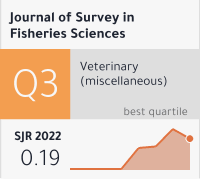Pathology of Alzheimer's Disease and Its Therapeutic Approaches: A Review
DOI:
https://doi.org/10.53555/sfs.v10i4.2916Keywords:
Alzheimer’s disease, risk factors, tau protein, disease-modifying therapy, neurodegeneration, amyloid peptide, heat shock proteins.Abstract
Dementia is a broad term that refers to a decrease in cognitive abilities severe enough to cause problems with daily activities. Alzheimer's disease (AD) is the most prevalent form of dementia, accounting for at least two-thirds of dementia cases in persons 65 and older. Alzheimer's disease is a neurological illness that causes gradual decline in behavioral and cognitive abilities such as memory, understanding, language, attention, reasoning, and judgment. Alzheimer's disease symptoms vary depending on the stage of the disease. Alzheimer's disease is categorized into three stages based on the degree of cognitive impairment. The review article focuses on the JAK2/STAT3 signaling pathway's position in the hippocampus and its relevance in Alzheimer's disease. Key proteins that activate the system include p-JAK2-Tyr1007 and p-STAT3-Tyr705, both of which have been reported to be increased in Alzheimer's disease models. The study also examines the significance of glial cells like astrocytes in Alzheimer's disease development. The JAK2/STAT3 pathway has a behavioral influence in animal models of Alzheimer's disease in reactive astrocytes but has no effect on tau and amyloid pathology. The clinical stages of Alzheimer's disease can be divided into four categories: (1) pre-clinical or pre-symptomatic, (2) prodromal AD, (3) mild AD dementia, and (4) moderate to severe AD dementia. AD has been considered a multifactorial disease associated with several risk factors such as increasing age, genetic factors, head injuries, vascular diseases, infections, and environmental factors (heavy metals, trace metals, and others). The underlying cause of pathological changes in Alzheimer’s disease (Aβ, NFTs, and synaptic loss) is still unknown. Several hypotheses were proposed as a cause for AD but two of them are believed to be the main cause: some believe that an impairment in the cholinergic function is a critical risk factor for AD, while others suggest that alteration in amyloid β-protein production and processing is the main initiating factor. Alzheimer's disease cases are currently predicted to be over 24 million globally, with the total number of dementia patients expected to more than 4 times by 2050.
Several physiological mechanisms in Alzheimer's disease damage Ach-producing cells, reducing cholinergic transmission through the brain. Acetylcholinesterase inhibitors (AChEIs), which are classed as reversible, irreversible, and pseudo-reversible, work by preventing cholinesterase enzymes (AChE and butyrylcholinesterase (BChE)) from breaking down ACh, resulting in increased ACh levels in the synaptic cleft. The present Alzheimer's disease treatment is only symptomatic. The only four FDA-approved treatments for Alzheimer's disease are AChE inhibitors (donepezil, galantamine, and rivastigmine) and NMDA antagonists (memantine). Anti-amyloid treatment is a type of Alzheimer's disease drug that targets the protein fragments that aggregate in the brain and form plaques, which is a defining feature of the illness. In conclusion, while promising medications are now being tested, more study is needed to better understand the pathophysiology of Alzheimer's disease and, as a result, to identify novel biomarkers and targets that will allow the creation of really disease-modifying therapies.









